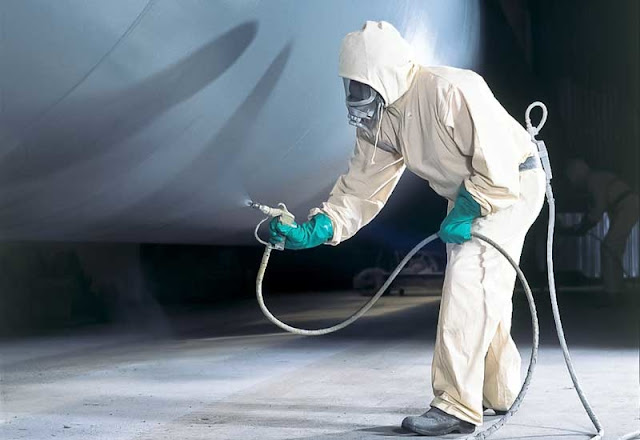Protective Coatings; to decrease corrosion by restricting the exposure of the metal in a corrosive surrounding
Protective Coatings are utilized to secure and
protect the metals from being rusted. Protective Coatings play like a physical
barrier in between the coated metal surface and the surrounding. Anyhow, they
are also utilized for the decorative purpose. Additionally to rusting safety
and decoration, they transfer some of the special properties such as the
hardness, electrical properties, oxidation resistive and the thermal insulating
properties to the secured surface. Protective coatings are classified in two
different ways one is organic coatings, inorganic coatings. Inorganic coatings
have bene categorized as metallic coatings and non-metallic coatings. Metallic
coatings comprise of hot dipping in which galvanizing, tinning, metal cladding,
cementation, calorizing, chromizing and electroplating are the processes taking
place. The surface or the chemical conversion coating comprises of chromate
coating, oxide coating, phosphate coating, porcelain enamel coating and
anodizing. The organic coatings comprise of paints, lacquers, varnishes and the
enamels.
The Global
Protective Coatings Market is projected to reach around US$ 35,707.3 million by the end of 2027, in terms of
revenue, growing at CAGR of 9.0%
during the forecast period (2020-2027).
The organic coatings are applied on the metallic
surfaces and are also used for decoration and resistance of corrosion purpose. The
base metal surface is generally contaminated or mixed with the rust or corrosion,
oil, scale, grease and many more. If they are used at the time of coating, it
gives discontinuous and the porous coatings. Hence, orderly to get an equal
uniformity and smooth Protective Coatings, these substances could be eradicated
by correct and proper pretreatment procedures. Hence it is known as
pre-treatment of the surface of the metals. The mechanical procedures are essential
to eliminate the loose scale and the oxides. Several methods are scarping,
hindering and sand blasting and many more. The sand blasting is finished when a
mild roughened surface is required. It is the procedure in which the sand or
abrasives over with air steam in the pressure of 25-100 is concentrated of the
metallic surfaces. As per the European standards EN 1504-2 and the EN 13813
with CE Marking, the novel CIN product meets the LEED v4 certification criteria
and has been top grade for the indoor air standard and quality.




Comments
Post a Comment